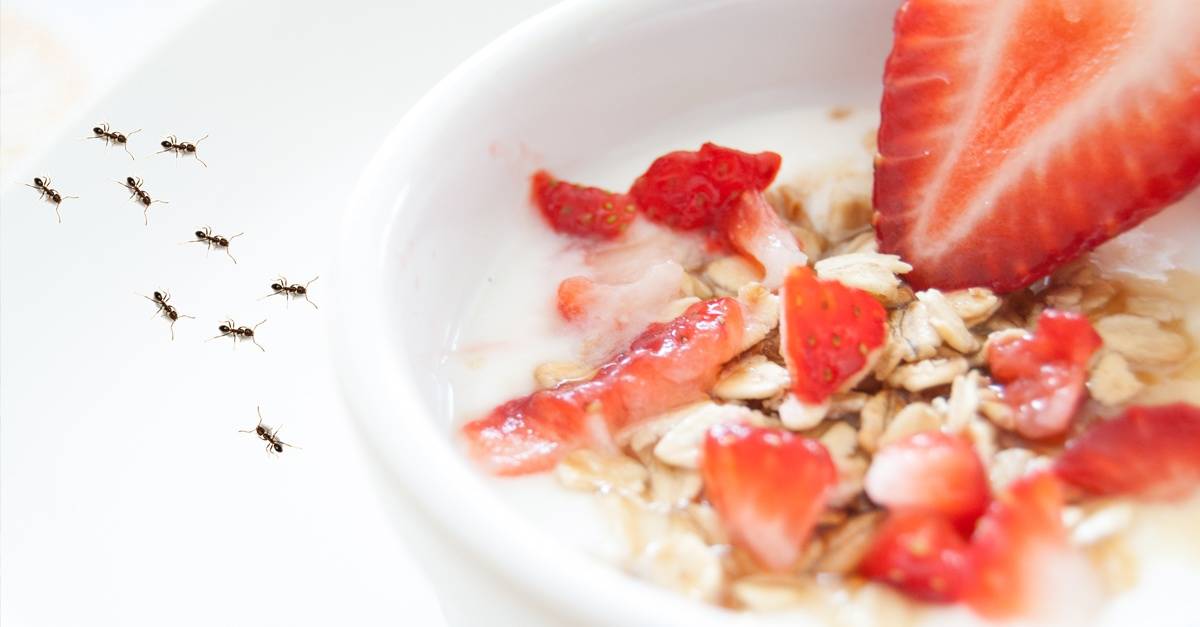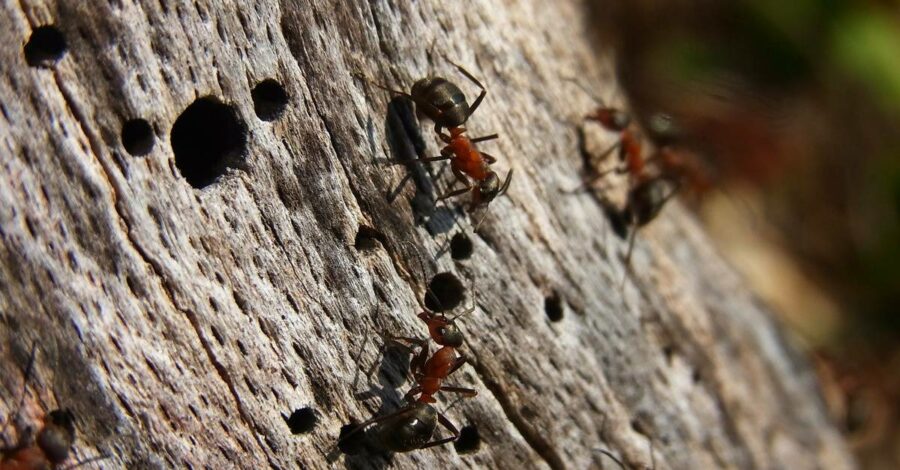Pest of the Month: The Carpenter Ant
By: EarthKind
Most people think termites are the biggest danger to their homes, but carpenter ants can cause serious damage, too. You might think these little pests are no big deal, but these household pests want to make your home their own. Doing so can create some serious structural damage to your house.
While most are harmless nuisances, there are a few types that can bite or sting. Keeping carpenter ants out of your home is the first step in preventing exposure to painful bites, and preserving your home from the costly damage they can cause.
What is a Carpenter Ant & How to Identify One
This type of ant, also known as the Camponotus, is a common household pest found in the US. They are some of the largest ants in North America, and they live in large groups. The different types in a colony can be different sizes, ranging from worker ants that are about ½ an inch long, to the queen ant who may be nearly an inch long. Some have wings, but they rarely fly.
They can be identified by the general presence of one upward node poking out like a spike at the “waist” attachment between the thorax and abdomen. Their antennae will be bent slightly, too.
You can recognize a carpenter ant infestation by the clean and smooth holes and tunnels in wood, almost as if they have been rubbed by sandpaper, and the small piles of wood shavings left behind. An infestation is oftentimes mistaken for termites. Note: Termites don’t leave wood scraps behind because they actually eat it, and unlike ants which are neat and clean, termites will track mud and dirt into their tunnels. If you notice sawdust-like remains, then you probably have a carpenter ant problem.
Colonies can exist in one area for many years, starting with one parent nest and then expanding to include multiple satellite nests. New colonies set up in nearby locations as their numbers increase, and the need for more territory and resources grows. Pest control professionals report that carpenter ant infestations are some of the most frequently encountered household pests and the most difficult to control.
Habitat
Carpenter ant nest sites are usually found in moist wood such as tree roots and stumps, or in decaying logs, but they can also set up inside buildings in damaged wood near water leaks or blocked gutters. Even if the main parent colony nest is outdoors, satellite colony nests may appear in wooden porches, wall voids, hollow doors, attic rafters, and other areas inside homes. Houses built in wooded areas, or with earth-to-wood contacts like when a tree branch touches the building, are especially easy for them to infest.
What Attracts Carpenter Ants in a Home?
Like most things in nature, carpenter ants burst into action once the weather warms up. The queen of the colony will begin laying eggs, and workers will be busy finding food for the next generation.
They eat almost anything and especially like honeydew secretion. They are also attracted to other sugary foods in your kitchen like jelly, syrup, baked goods, and fruit. They will look for protein sources as well such as meat, cooked eggs, and other dead insects.
How to Get Rid of Them
You can prevent pest problems and get rid of carpenter ants by eliminating the moist conditions that attract them.
- Remove tree stumps, tree limbs, and rotting wood within 100 yards of your home.
- Store firewood in an area far away from your home.
- Keep gutters and rain spouts clear to ensure proper drainage.
- Leave space between your house and any landscaping like shrubs or vegetation so there is no contact — ants use branches like highways to enter your home from outside.
These pests use airborne odors to locate food, and they leave chemical trails for the fellow workers to follow to and from their nest. Keeping your home clean and storing food properly will help control them by reducing their available food sources.
A plant-based ant repellent, like Stay Away® Ants, will stop carpenter ants from being able to detect the chemical trails others lay down, plus make the food near the repellent pouches seem less appealing. Unlike chemical pesticides, Stay Away is made with botanical ingredients and safe to use around children and pets, when used as directed. Naturally smarter pest control solutions help to preserve nature’s ecosystem.







